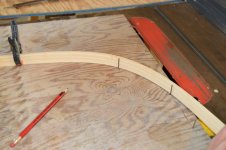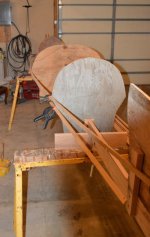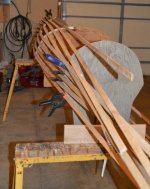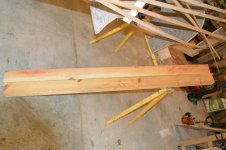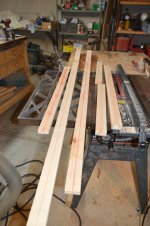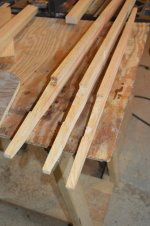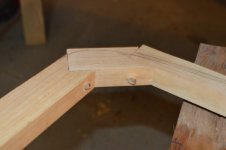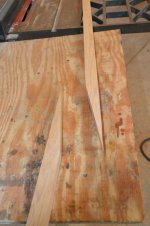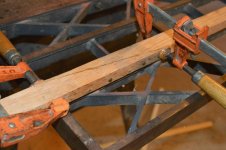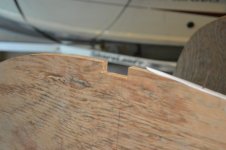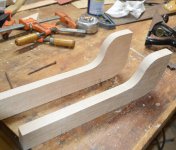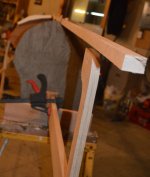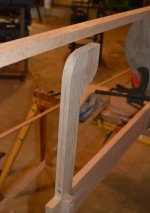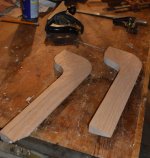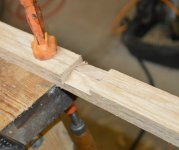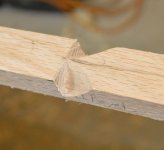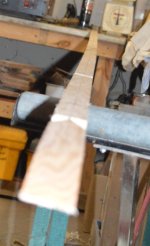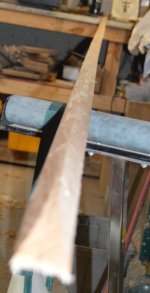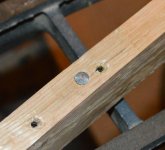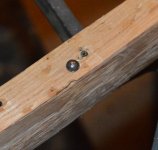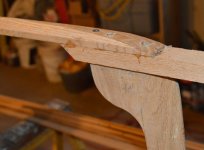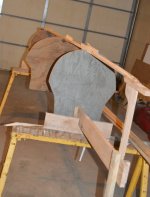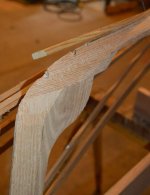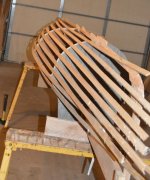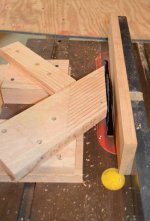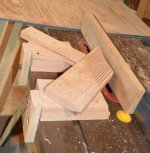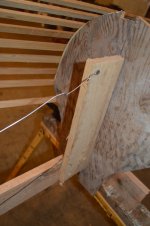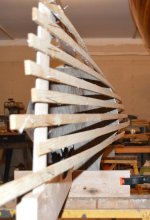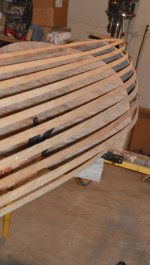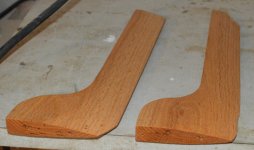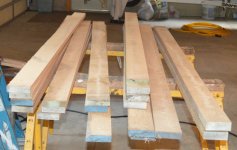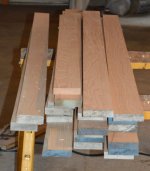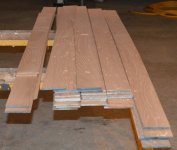So, my last couple of shop days I've been spending some time on a new build Solo Daytripper. I was somewhat disappointed in my previous solo build, and have found that even with ballast and careful trimming my tandem is far too large for me to daytrip comfortably.
I sketched up a new design:
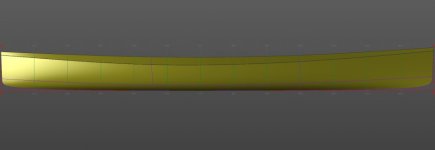
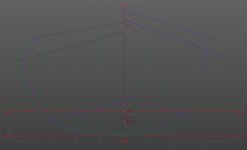
This one is fairly small.
Length: 13' between verticals, just a little rake to the stems so about an inch less on the 3.5" WL
Gunwale Beam: 23"
Shoulder Beam: 27"
3.5" WL Beam: 21.8"
Both a little longer and narrower than a Wee Lassie II.
Rounded midpoint bottom, shifting into a v-hull in the ends.
Asymetric hull, slightly swede-form with the wide point about 10" back of dead center. This shifts the CB back about 4" from center. Slightly (very slightly) more rocker forward.
I sketched up a new design:


This one is fairly small.
Length: 13' between verticals, just a little rake to the stems so about an inch less on the 3.5" WL
Gunwale Beam: 23"
Shoulder Beam: 27"
3.5" WL Beam: 21.8"
Both a little longer and narrower than a Wee Lassie II.
Rounded midpoint bottom, shifting into a v-hull in the ends.
Asymetric hull, slightly swede-form with the wide point about 10" back of dead center. This shifts the CB back about 4" from center. Slightly (very slightly) more rocker forward.

